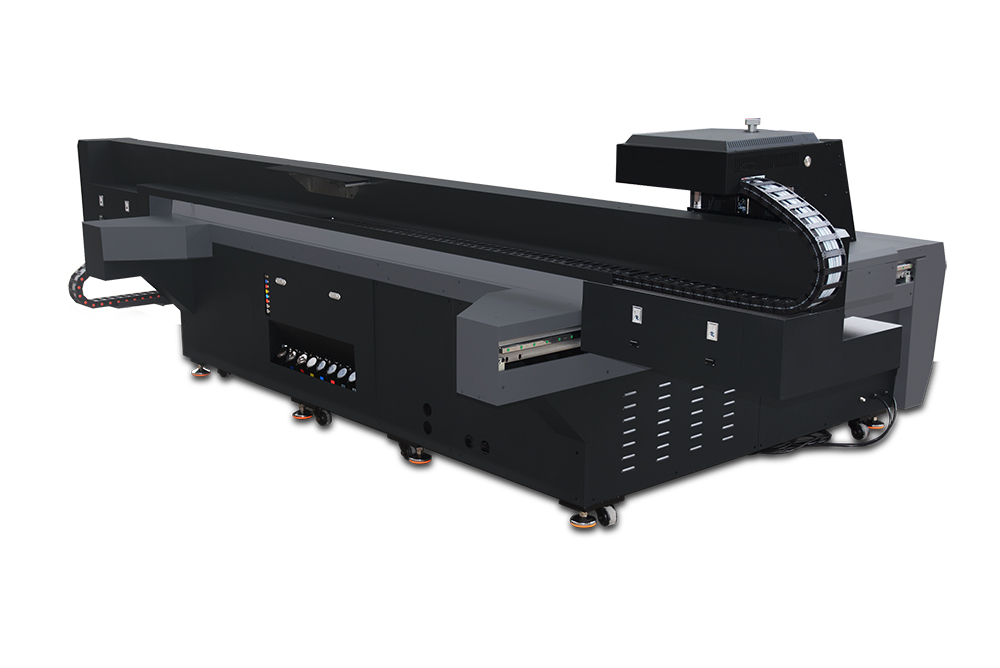How to Optimize Print Speed without Sacrificing Quality in UV Flatbed Printing?
How to Optimize Print Speed without Sacrificing Quality in UV Flatbed Printing?
In the world of digital printing, UV flatbed printing has emerged as a game-changer, offering unparalleled versatility, speed, and quality. However, striking the perfect balance between print speed and quality can be a challenging task. This article delves into strategies for optimizing UV flatbed print speed without compromising on print quality.

Understanding UV Flatbed Printing
UV flatbed printing utilizes ultraviolet (UV) light-curable inks, which cure instantly under UV light exposure. This technology enables instant drying, eliminating the need for heat or solvents, resulting in a more environmentally friendly and efficient process. UV inks are renowned for their high color saturation, durability, and ability to adhere to various substrates, including plastics, metals, and wood.
Factors Affecting Print Speed and Quality
1. Ink and Substrate Compatibility
UV inks must be compatible with the substrate to ensure optimal adhesion and cure. Choosing the right ink formulation for the specific material is crucial for maintaining print quality. Additionally, the ink’s viscosity and curing characteristics directly impact the print speed. Lower viscosity inks tend to flow better, facilitating faster printing speeds, but may require precise control to maintain print quality.
2. Printhead Technology
The printhead, the heart of any UV flatbed printer, determines both speed and quality. Industrial-grade printheads, such as those from Ricoh, Kyocera, and Toshiba, offer higher speeds and longer lifespans compared to their consumer-grade counterparts. These printheads are designed for continuous high-speed operation with minimal maintenance requirements.
3. Printing Modes
UV flatbed printers typically offer multiple printing modes, ranging from draft to high-resolution modes. Each mode adjusts the number of passes (PASS) the printhead makes over the substrate, with higher PASS counts resulting in higher print quality but slower speeds. Selecting the appropriate mode based on the job requirements is key to balancing speed and quality.
4. Hardware Configuration
The printer’s hardware configuration, including the number of printheads and their arrangement, significantly impacts print speed. Adding more printheads or upgrading to faster models can dramatically increase throughput. However, this upgrade must be compatible with the printer’s overall design and capabilities.
5. Computer and Software Optimization
The computer system driving the UV flatbed printer plays a crucial role in overall print efficiency. Upgrading to faster processors, solid-state drives (SSDs), and dedicated graphics cards can significantly improve file processing and data transfer speeds. Additionally, optimizing the printing software to minimize unnecessary operations and streamline workflows can further enhance efficiency.
Strategies for Optimizing Print Speed without Sacrificing Quality
1. Select the Right Ink and Substrate
Before embarking on any optimization efforts, ensure that the UV ink and substrate are well-suited for the job. Consult with ink and material suppliers to understand their compatibility and performance characteristics.
2. Upgrade Printheads and Hardware
Consider upgrading to industrial-grade printheads with faster printing speeds and longer lifespans. If feasible, increase the number of printheads to distribute the workload and further boost speed. Additionally, ensure that the printer’s overall hardware is capable of supporting these upgrades without compromising print quality.
3. Adjust Printing Modes Strategically
For jobs that do not require the highest print quality, select lower PASS count modes. This adjustment can significantly increase print speed without noticeable quality degradation. Always evaluate the final product to ensure that it meets the customer’s expectations.
4. Optimize Computer and Software
Upgrade the computer system driving the UV flatbed printer to enhance processing and data transfer speeds. Install the latest software updates and optimize the printing software to minimize unnecessary operations. Consider using dedicated workstations with high-performance components to maximize efficiency.
5. Utilize Automation and Workflow Tools
Invest in automation tools and workflow software that streamline pre-press, printing, and post-press operations. Automated material handling systems can reduce manual labor and increase throughput. Workflow software can optimize job scheduling, color management, and quality control processes.
6. Regular Maintenance and Calibration
Regular maintenance and calibration of the UV flatbed printer are essential for maintaining optimal performance. Clean printheads, check ink levels, and calibrate the printer regularly to ensure consistent print quality and maximum speed.
7. Embrace Training and Education
Provide training and education to operators and technicians to ensure they understand the printer’s capabilities and limitations. A well-trained workforce can optimize job settings, troubleshoot issues quickly, and minimize downtime.
Conclusion
Optimizing UV flatbed print speed without sacrificing quality requires a comprehensive approach that addresses ink and substrate compatibility, printhead technology, printing modes, hardware configuration, computer and software optimization, automation, and regular maintenance. By implementing these strategies, printing professionals can achieve faster turnaround times while maintaining the high standards of print quality demanded by today’s market. As UV flatbed printing technology continues to evolve, staying informed about the latest advancements and best practices will be key to maintaining a competitive edge.
